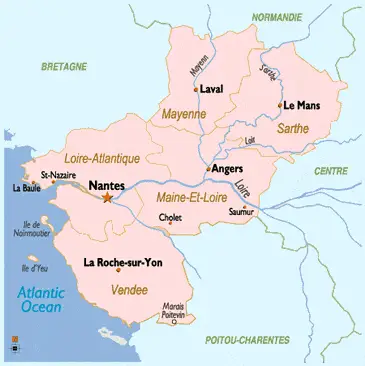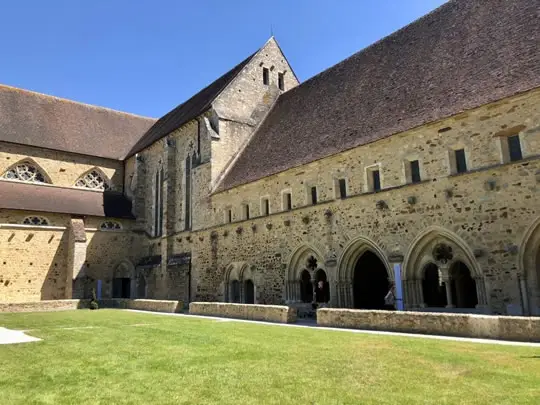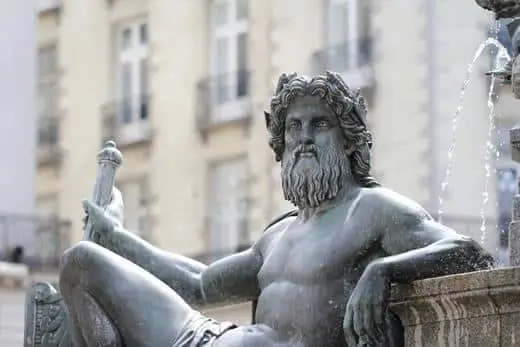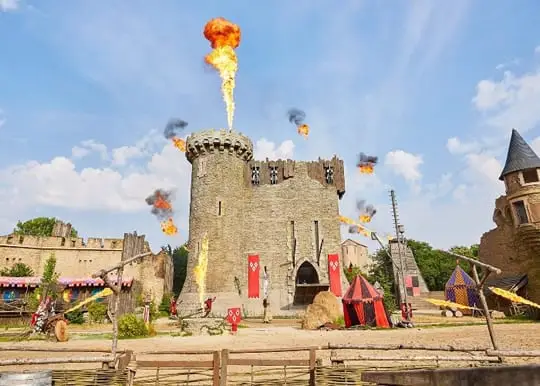Pays de la Loire
Welcome to the Beautiful Western Loire
The Pays de la Loire region, located in western France, is renowned for its stunning landscapes, rich history, and diverse culture. From the picturesque coastline to the rolling countryside and charming towns and cities, the region offers something for everyone.
One of the main attractions of the Pays de la Loire region is its stunning coastline. With over 450 kilometers of coastline, the region boasts some of the most beautiful beaches in France, including the popular seaside resorts of La Baule, Pornichet, and Saint-Jean-de-Monts. Visitors can soak up the sun, swim in the ocean, or indulge in a variety of water sports, such as surfing, windsurfing, and kiteboarding.

The region is also home to a number of stunning castles and chateaux, many of which date back to the medieval and Renaissance periods. One of the most famous of these is the Chateau de Chambord, a stunning castle with over 400 rooms and an impressive central staircase. Other notable castles and chateaux in the region include the Chateau de Angers, the Chateau de Saumur, and the Chateau de Brissac.
In addition to its natural and historical attractions, the Pays de la Loire region is also renowned for its cuisine. The region is famous for its seafood, including oysters, mussels, and scallops, as well as its delicious cheeses and wines. Visitors can sample these delights at local restaurants and markets throughout the region.
The Pays de la Loire region is also home to a number of charming towns and cities, each with its own unique character and charm. The city of Nantes, the largest city in the region, is renowned for its art and culture, as well as its beautiful architecture and lively atmosphere. Other notable towns and cities in the region include Angers, known for its historic center and impressive chateau, and Le Mans, home to the famous 24 Hours of Le Mans race.
Overall, the Pays de la Loire region is a must-visit destination for anyone traveling to France. Its stunning landscapes, rich history, and delicious cuisine make it a popular choice for tourists from around the world. Whether you’re looking to soak up the sun on the beach, explore historic castles and chateaux, or sample delicious local cuisine, the Pays de la Loire region has something for everyone.
Pays de la Loire Highlights
Le Mans-Laval: The famous 24-hour car race and “rillettes”, a local gastronomic speciality, have, in their different ways, assured the town’s reputation. Le Mans is a shop window for progress but it is also knows how to maintain its traditions. While speed rules on the Bugatti racing track, vintage and more recent cars can be found in the Musee de L’Automobile. Enclosed within high gallo-Roman walls outside the town is the 13th century Abbaye de L’Epau and its vast Gothic Cathedral, a monument to the memory of the Plantagenet Kings of England.

Not to miss: the neighboring medieval fortress of the Lude. The chateau de Lude is the only chateau in France uniting three architectural styles: medieval fortress, Italian Renaissance and French Classicism. The chateau is open to the public for guided visits. Laval, an historic art-filled town set on the banks of the Mayenne river, was the birthplace of Douanier Rousseau. Highlights of the town include the medieval castle (transformed into a fine arts museum), the churches Notre Dame des Cordeliers and Notre Dame de Pritz, and the Public School Museum.
Saumur/Fontevraud: Saumur is France’s military and equestrian center based in the Western Loire. For nearly two centuries the cavaliers of the reenactment of Cadre Noir have been the pride of this city, which is also home of the National Riding School. The town’s castle, a luxurious residence for the Dukes of Anjou in the Middle Ages and bastion of Protestantism in the 17th century, overlooks the majestic river and seems to watch over the Old Town, one of the most beautiful in the Loire Valley. Extending over nearly 37 acres, Fontevraud is the largest group of monastic buildings anywhere in Europe. Of the five abbeys founded in the 11th century, three still exist.
The English Plantagenet Kings chose as their final resting place and the recumbent figures of Henry II, Eleanor of Aquitaine, Richard the Lionhearted and Isabel of Angoulême can be admired in Abbey Church. The kitchen, built in the Romanesque style, is the best known and the most curious of the recently restored buildings.
Angers: The Maine river flows peacefully at the foot of the imposing Chateau d’Angers in the Western Loire, which, together with the towering Cathedral, protects the Old Town and its half-timbered houses houses. Angers is a great benefactor of the arts and is at the forefront of tapestry design. The world largest liqueur, Cointreau, is produced in Angers. Moreover, Anjou boasts a great number of wine producers and chateaux owners offering wine tasting of the extremely diverse local production.
Nantes, the capital of the Pays de la Loire
Nantes is the capital of Pays de la Loire and has a rich history, with Gothic Cathedrals, museums, chic boutiques and the Jules Verne Museum. The city, situated on the Loire River, has a population of around 300,000 and is known for its Breton flair. Visitors can enjoy public transport, bike trails, and botanical gardens. Food specialties include beurre blanc sauce, Petit Beurre biscuit, and Muscadet wine.

Puy du Fou: The tragic wars in the Vendee in 1793 have left a deep mark on the inhabitants of this area of hills, pastures and woodlands. Every summer, some 800 actors and 50 horsemen stage a dramatic reenactment of these events for 380,000 spectators at the Puy du Fou. A permanent heritage center, the Eco-Museum of the Vendee, complete with period villages has been created around the Chateau of the Puy du Fou.

Travel through the centuries at the Puy du Fou Grand Parc and give free rein to your emotions. Shiver as you watch the incredible chariot race in the Gallo-Roman Stadium (Stadium Gallo-Romain), tremble before the daunting Viking attack on the Fortress from the Year 1000 (Le Fort de l’An Mil), thrill to the rhythms of the fantastic Battle of the Keep (Bataille du Donjon), and soar along with the majestic flight of the eagles in the Falconry show (Fauconnerie). At the Grand Parc at Puy du Fou, you will find an array of non-stop dazzling spectacles to amaze you!
The Islands: Although the island of Noirmoutier and the Ile d’Yeu are fairly close to each other and both are unspoiled and peaceful, they are quite different. With its Chateau and abbey, the island of Noirmoutier is linked to the continent by a bridge. Another approach to the island; at low tide only; is the “Gois”, the causeway across the sea. Further to the south and some twenty miles from the mainland, a small granite projection, the Ile d’Yeu, rises from the Atlantic. Accessible by sea and air, the island is dominated by the fortress of Pierre Levee and the 11th century church. Its coastline is rocky, its climate so mild that mimosa and laurel grow abundantly.
La Baule & the peninsula of Guerande: From La Baule, the most beautiful beach in Europe, to Le Croisic, a fishing and salt marsh region, the treasures of Cote d’Amour face the Atlantic Ocean. For centuries, Guerande, a medieval town, has hidden behind its ramparts. Near it lies the Natural Regional Park of La Briere, a preserved space of 100,000 acres with a seductive network of canals, islets, lagoons and marshes. St-Nazaire is the city where the France and the Monarch of the seas were built; today the frames of the Airbus planes are assembled here.
Contact us to plan a great custom trip to the Western Loire.
Read more: Learn about the ten “magical villages” of the Pays de la Loire.